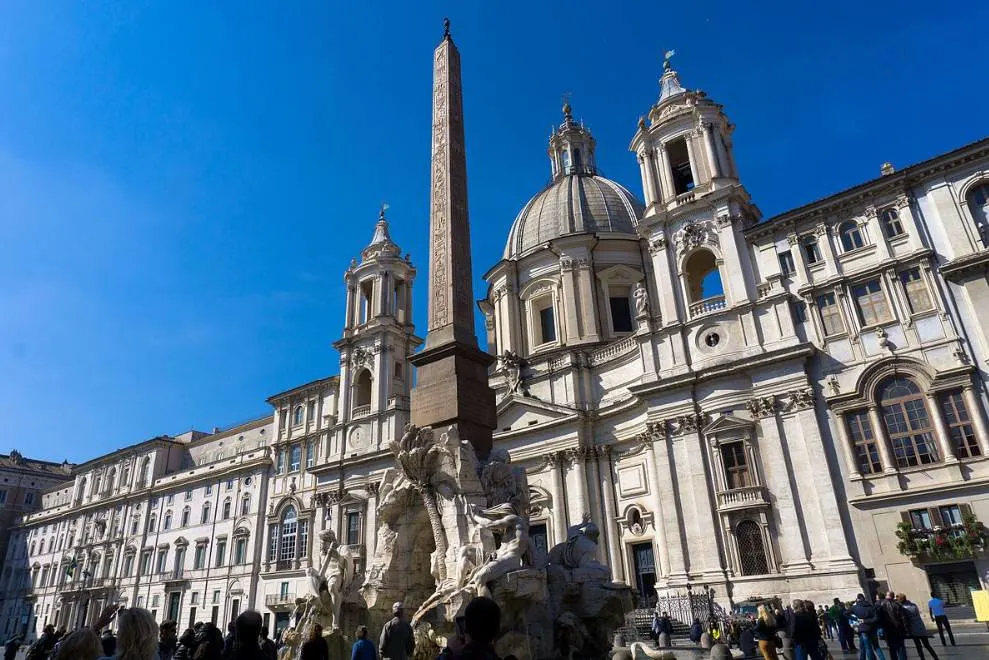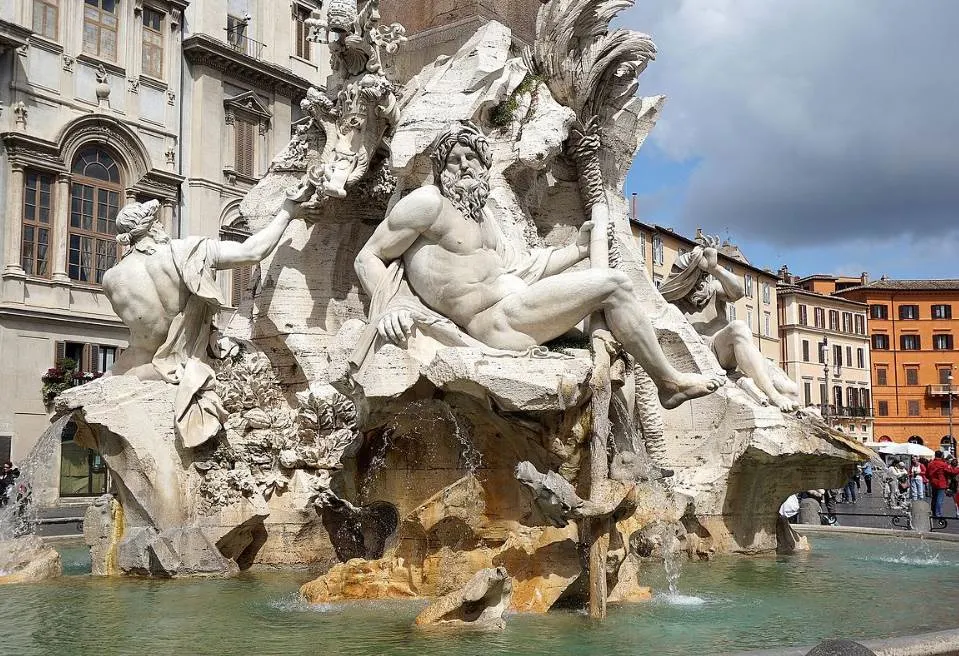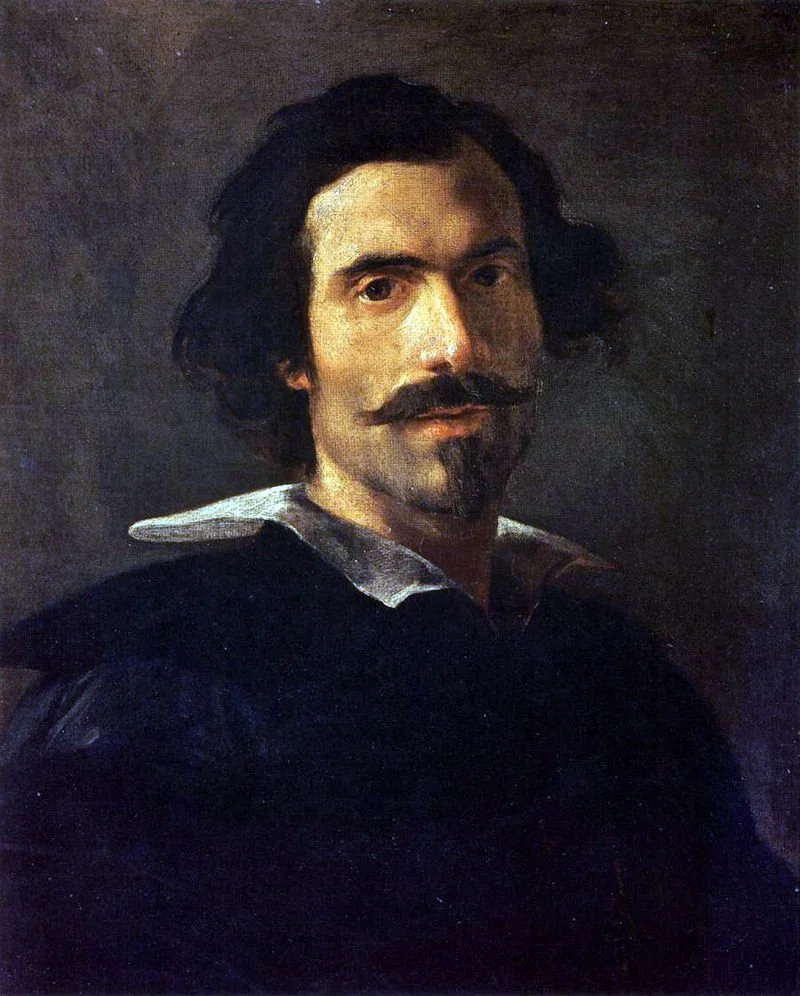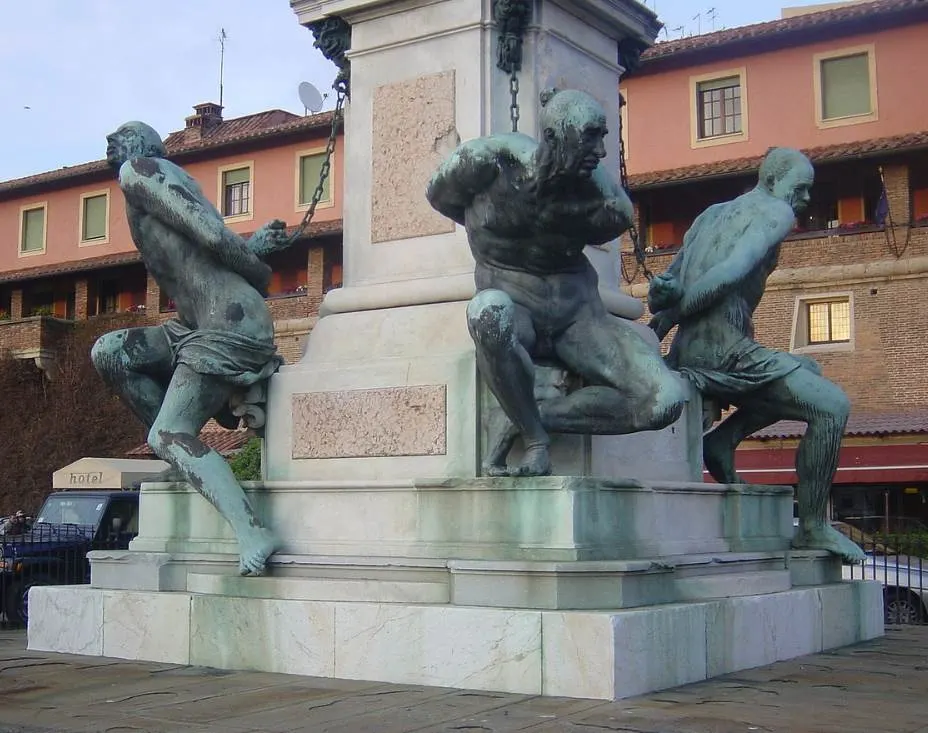When an architectural competition was launched in the 17th century to design a new fountain in Rome, there was only going to be one winner.
Gian Lorenzo Bernini (1598-1680) was the most renowned architect and artist of the Baroque era and he left a permanent mark on the city by designing various monuments and buildings in Rome.
In this article, you’ll discover some of the most interesting facts about Fontana dei Quattro Fiumi, one of Bernini’s ultimate masterpieces.
1. It’s located in the center of one of Rome’s most popular squares
Fontana dei Quattro Fiumi is a monumental fountain in Rome that is located in the center of Piazza Navona, one of the most amazing squares in central Rome.
This square was constructed on the remains of the Stadium of Domitian, an ancient Roman entertainment venue commissioned by Roman Emperor Domitian around 80 A.D.
If you take a closer look at this square, you can see that it still marks the boundary of this stadium that was known as the “Circus Agonalis” in ancient Rome.
The square is decorated with two other fountains, one called the “Fountain of Neptune” (1574) and another called the “Fontana del Moro” (1575).

2. The fountain was commissioned by the Pope for a particular reason
The fountain was commissioned by Giovanni Battista Pamphilj (1574-1655), a man who was known as Pope Innocent X between 1644 and 1655.
The Pope was very involved in politics and also commissioned several important buildings in Rome, most notably the Palazzo Nuovo at Michelangelo’s Campidoglio.

The main reason why he commissioned this fountain is that his palace, the Palazzo Pamphilj, was completed here between 1644 and 1650.
He also initiated the construction of the amazing church right next to it called Sant’Agnese in Agone. The first stone of this Baroque building was laid in 1652 but wasn’t compelled until 1859.

3. The sculptures represent 4 major rivers of 4 different continents
Fontana dei Quattro Fiumi translates to “Fountain of the Four Rivers.” This is a reference to the main theme of the sculptural group of the fountain.
The 4 sides of the monument depict allegorical representations of the 4 main rivers of the 4 continents where the Pope had authority at the time. These are:
- River Ganges in Asia – Carries an oar which references the river’s navigability.
- River Nile in Africa – Features loose clothes in reference to the uncertainty about the river’s source.
- River de la Plata in America – Sits on a pile of coins, referencing the riches brought to Europe from the Americas.
- River Danube in Europe – Touches the coat of arms of the Pope as it’s the closest river to Rome.

4. Bernini earned the commission during a serious low in his career
Although Gian Lorenzo Bernini is considered to be one of the greatest Baroque artists in history, he experienced a serious drawback in the 1640s.
When cracks started to appear in the bell towers of St. Peter’s Basilica, he was blamed and It almost completely ruined his reputation.
He was also a close friend of Barberini Pope Urban VIII, the former rival of Pope Innocent X who commissioned the fountain.
According to Filippo Baldinucci’s “The life of Cavaliere Bernini” (1682), he used a trick to convince the Pope by producing an astonishing model for the fountain.
This moment not only earned him the commission to design the fountain but also relaunched his career.

5. The obelisk is ancient but didn’t come from Egypt
The obelisk of the fountain is one of the 13 ancient obelisks that decorate various public spaces in the magnificent city of Rome.
Although there are 8 ancient Egyptian obelisks, the obelisk of Fontana dei Quattro Fiumi is one of the city’s 5 ancient Roman obelisks.
It was constructed of Aswan Granite and is believed to have been commissioned by Roman Emperor Domitian (yes, the same guy who commissioned the stadium).
The hieroglyphics on the obelisk reference the deification of his father Vespasian and his brother Titus. It probably stood at the Temple of the Gens Flavia on the Quirinal Hill, a Roman temple dedicated to the cult of the Flavian Dynasty.
It was later moved to the Circus of Maxentius in the early 4th century A.D. before being transported to Piazza Navona.

6. Bernini’s design was probably inspired by a monument in Livorno
Bernini already produced fountains in Rome before he started working on Fontana dei Quattro Fiumi. Most notably the Fountain of the Triton in Piazza Barberini.
This fountain stands in front of the Palazzo Barberini, the palace of the artist’s former patron. Using this as a model was simply not possible so he looked for inspiration elsewhere.
It’s likely that he was inspired by a monument in the Italian city of Livorno that was completed in 1626. This monument is called the Monument of the Four Moors and commemorates the victories of Ferdinand I of Tuscany over the Ottomans.
The peculiar monument depicts 4 chained Ottoman slaves on each side, similar to how Bernini sculpted the allegorical sculptures of the 4 rivers.

7. Not everybody was happy with the construction of an expensive fountain
Fountains were of vital importance in Rome before everybody had plumbing installed in their house. Locals simply used fountains as their source of water.
Regardless of this, the commission of this monumental fountain coincided with a devastating famine that raged in Rome between 1646 and 1648, so not everybody was happy that so much money was spent on it.
The street vendors who used to sell their goods on the square were expelled from Piazza Navona by Pope Innocent X as well. After all the Pamphilij wanted to enjoy their amazing square in peace.
Although there was initial opposition, this decision did transform Piazza Navona into one of the most amazing public spaces in Rome in the following centuries.

8. The unveiling of the fountain was a big event in Rome in 1651
The fountain was unveiled on June 12, 1651, an event that was witnessed by thousands of spectators who wanted to get a glimpse of the new monument in their city.
The overall reaction was one of amazement at the beauty of the sculptures, and the decision to remove the merchants from the square was quickly forgotten.

